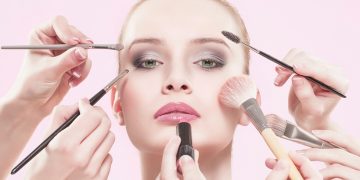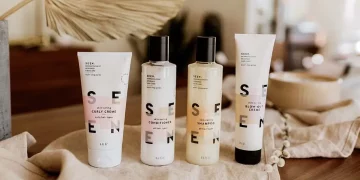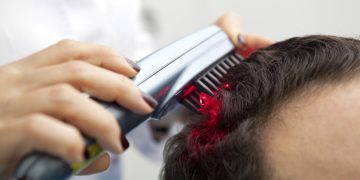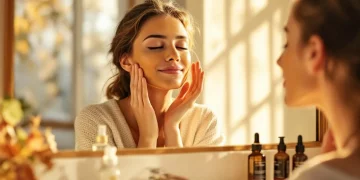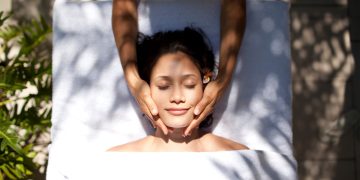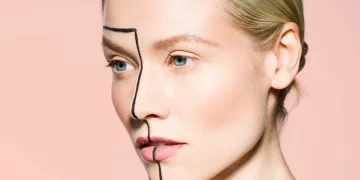Finishing techniques have become the quiet but powerful final step that determines how a makeup look reads—from soft, radiant, and youthful to structured, flawless, and editorial. While foundation and concealer create the canvas, the finish dictates the mood. The debate between dewy and matte has only intensified as makeup lovers pursue longer wear, photo readiness, and personalized results.
But is one finish really superior? Or is the modern beauty landscape more about knowing how—and when—to use each? This deep-dive explores the science, artistry, and strategy behind makeup finishes, revealing how setting sprays, powder textures, and longevity hacks work together to create your desired aesthetic.
1. What Does “Finish” Really Mean in Makeup?
A makeup finish refers to the reflective quality your skin displays once all complexion products are applied. It determines:
- Light reflection vs. light absorption
- Texture emphasis vs. texture blurring
- Perceived hydration vs. perceived structure
Three Major Categories:
- Dewy (Luminous, Glossy, Radiant)
Creates a glowing, hydrated look with intentional shine. - Natural/Satin (Soft, Skin-like Glow)
The most wearable finish—balances shine and structure. - Matte (Blurred, Velvety, Shine-Free)
A polished, pore-smoothing, long-wear finish.
Choosing between them isn’t about trends—it’s a dialogue between skin type, occasion, climate, and personal style.
2. Dewy Finishes: How Do You Create That Fresh, Radiant Look?
Dewy makeup is associated with vitality—youthful, plump, and healthy. But intentional glow demands control, otherwise it appears greasy.
Key Elements of a Dewy Finish
1. Hydrating Bases
Water-based primers, hyaluronic serums, and lightweight moisturizers prep the skin for luminosity.
2. Light-Reflective Complexion Products
Foundations with:
- Micro-fine pearl pigments
- Smoothing polymers
- Hydrating oils
create bounce under natural light.
3. Cream and Liquid Textures
Cream blushes, liquid highlighters, and balmy bronzers melt into the skin seamlessly.
Dewy Doesn’t Mean Oily
Strategic glow placement matters:
- High points only (cheekbones, brow bone, nose bridge)
- T-zone moderation
- Avoiding shimmer near textured areas
Best For:
- Dry or mature skin
- Editorial and natural beauty looks
- Indoor events
- Photography that benefits from soft reflection
3. Matte Finishes: Why Are They Still So Important in Makeup?
Matte is the backbone of longevity, precision, and structural beauty. Contrary to old myths, modern matte isn’t flat—it’s soft, blurred, and elegant.
What Creates a Matte Look?
1. Oil-Absorbing Ingredients
Silica, clay, and rice powder reduce shine without creating heaviness.
2. Velvety Foundation Formulas
Long-wear matte foundations contain film formers that lock pigment to the skin.
3. Powder Layers
Setting powder + finishing powder =
oil control + texture blurring
Modern Matte Is Softer
New technology allows for:
- Micronized particles that blur, not cake
- Flexible polymers that move with the skin
- Transfer-resistant wear without dryness
Best For:
- Oily or combination skin
- Hot climates
- All-day events
- High-definition photography

4. Setting Sprays: Are They Just Water or Do They Really Work?
Setting sprays have evolved from refreshing mists to engineered formulas that change the entire finish.
Three Main Types:
- Dewy Setting Sprays
Contain glycerin, botanical oils, and reflective particles.
Add glow and rehydrate makeup. - Matte Setting Sprays
Use alcohol, silica, and film formers.
Reduce shine and lock makeup for 12+ hours. - Hybrid/Long-Wear Sprays
Form a flexible mesh over makeup.
Mimic “makeup sealers” used on film sets.
Application Techniques
- T-formation misting for uniform coverage
- Sponge press-in method for bulletproof wear
- Layering between steps (foundation → mist → powder → mist)
creates bridal-level longevity.
5. Powder Textures: How Do They Shape the Final Look?
Powder is the architect of finish—controlling shine, blurring texture, and setting pigment.
Loose vs. Pressed Powder
| Type | Best For | Finish |
|---|---|---|
| Loose Powder | Oily skin, setting foundation | Matte, soft blur |
| Pressed Powder | On-the-go touch-ups | Natural, satin |
| Finishing Powder | Last step for texture smoothing | Airbrushed effect |
Translucent vs. Tinted
- Translucent: universal, invisible, good for baking
- Tinted: boosts coverage, evens tone
HD Powders: The Blur Masters
Made of finely milled silica, they:
- Scatter light
- Minimize pores
- Perfect flash photography
But overuse = flashback—so moderation is key.
6. Longevity Hacks: How Do Professionals Make Makeup Last All Day?
Long wear is not about piling on product—it’s about precision, sequencing, and balance.
Pro-Level Techniques
1. The Moisture Sandwich
Hydrating mist → moisturizer → mist
Ensures foundation binds smoothly.
2. Thin Layers Only
Multiple thin layers last longer than thick coats.
3. Powder the T-Zone, Not the Whole Face
Prevents dryness and cakiness.
4. “Underpainting” Technique
Apply cream contour and blush before foundation:
- Boosts longevity
- Looks more natural
- Reduces powder need
5. The Double-Lock Method
Powder → setting spray
AND
Setting spray → powder (rare, but effective for humidity)
7. How Do You Choose the Right Finish for Your Face Shape, Skin Texture, and Style?
Makeup artistry involves adapting the finish to your features.
Dry Skin
Best: Dewy or satin
Avoid: Heavy matte powders
Oily Skin
Best: Matte to control shine
Avoid: Thick balms or emollient creams
Textured Skin
Best: Satin (balances reflection)
Avoid: Shimmery highlighters on texture
Round Face
Matte contour helps create dimension.
Angular Face
Dewy highlights soften edges and add youthfulness.
Personal Style Matters
- Minimalist → Satin
- Glam → Matte
- Editorial → Dewy
There’s no wrong choice—only intentional choice.
8. Is the Future a Dewy-Matte Hybrid?
Beauty trends are merging the best of both worlds.
Emerging Technologies
- Semi-matte foundations with skincare actives
- Dewy powders (yes, they exist—bouncy, hydrating gels)
- Intelligent setting sprays that shift based on humidity
- Serums that adjust skin’s reflective index
The future is adaptive finishes—customized to environment and skin needs.
Conclusion: Is Your Perfect Finish Dewy, Matte, or Something In Between?
The truth is simple: there is no universal winner.
Your ideal finish changes with:
- Seasons
- Skin condition
- Event type
- Mood
- Personal expression
Mastering finishing techniques empowers you to shift your identity effortlessly—one day glowing and ethereal, another sculpted and velvety.
Makeup finish isn’t just cosmetic.
It’s emotional.
It’s storytelling.
It’s the final brushstroke that defines the entire masterpiece—you.







